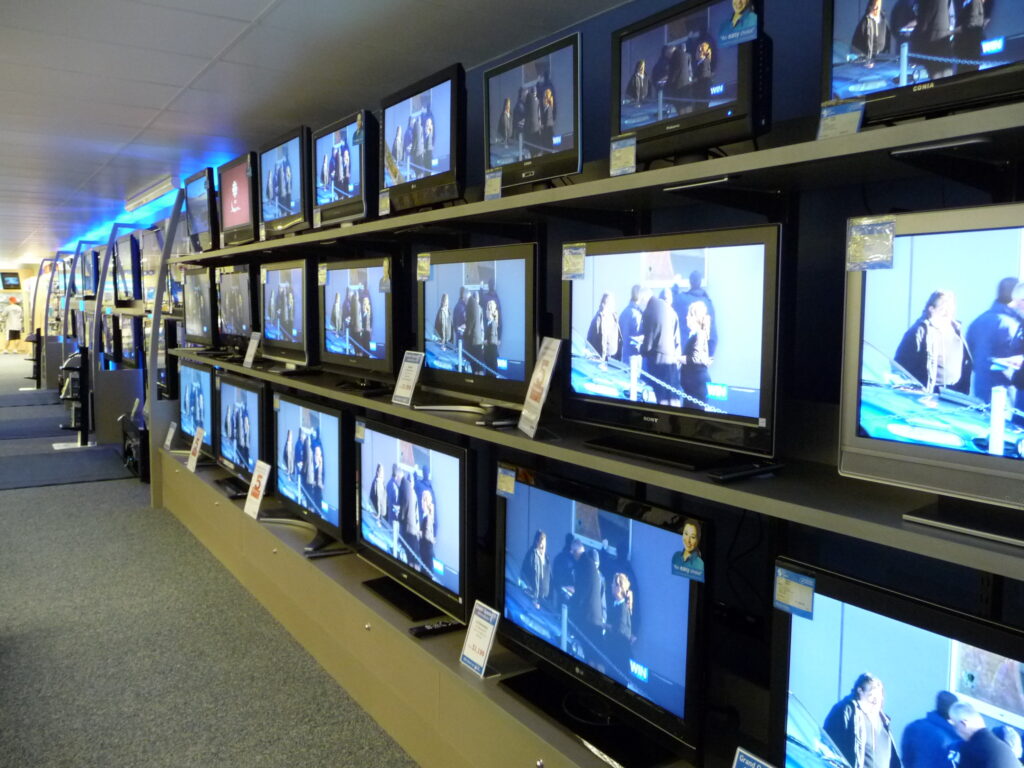The paradox of technology is a compelling phenomenon that reveals itself when we consider how the same technology designed to simplify our lives by offering more functions, ultimately complicates it. It’s astonishing to witness how brands consistently strive to outdo one another in a crowded market, often by adding more and more features to their products. However, this relentless pursuit of complexity opens up a valuable opportunity for small businesses to differentiate themselves by embracing a counterintuitive strategy—offering simplified solutions in a tech-centric industry by one-downing the competition.
Too Many Options
A few years ago, I embarked on a mission to find a TV remote to simplify my mom’s entertainment experience. The existing TV remote boasted an overwhelming 52 buttons, while the cable box remote added another 42 buttons to the mix.
These designers certainly sought to streamline the user’s actions by offering one-button operation to access platforms like Netflix, wanting to make every conceivable interface option accessible from the remote, and providing a high level of customization for the user. However, they seem to have been designed to demonstrate the ingenuity of the design engineer in developing a remote intended for other engineers rather than typical users.
Unfortunately, my mom’s macular degeneration made navigating and operating these complex remotes impossible. To add to the complexity, she only watched a handful of TV stations, yet her cable package included a staggering 250 channels.
Determined to find a solution that would cater to her specific needs, we embarked on a quest for simplicity. We aimed to remove unnecessary options and streamline the remote to create a user-friendly experience. Finally, we discovered a solution that fits the bill – a remote with just seven buttons and two rockers.

This simplified remote included only the essential functions: power, mute, and five preprogrammed channels. Additionally, it featured a rocker for effortless scrolling through the preprogrammed channels and another to control the volume. By eliminating superfluous buttons and focusing solely on the fundamental features my mom required, we found a remote that simplified her TV-watching experience and eliminated the unnecessary complexity that hindered her enjoyment.
In this instance, this company embraced the concept of one-downing the competition. Rather than succumbing to the trend of overcomplicating technology by adding more buttons to control every conceivable device, they recognized the value of offering a simpler alternative. By removing superfluous buttons and presenting a remote with only the essential features, they created a solution that catered to my mom’s needs and facilitated her access to the desired content.
H2 Too Many Unwanted Features
During the TV shopping experience, I encountered yet another aspect of the paradox of technology—a realization that prompted me to consider the value of embracing a strategy of one-downing the competition.
The TV manufacturer proudly advertised the inclusion of five HDMI and two USB ports, among other additions, in their product’s description. Most consumers seldom utilize more than one USB port for a Roku, Firestick, Chromecast, etc., and one or perhaps two HDMI ports to connect the TV to a satellite or cable box and perhaps a Blu-ray Player.
The TV also boasted a built-in tuner. For those who rely on cable, satellite, or a streaming service like my mom and about everyone else I know, these tuners serve no purpose and can even lead to confusion if accidentally used. Similarly, individuals who utilize external amplifiers or sound systems have no use for the TV’s built-in speakers. While the presence of all these additional ports and features may appeal to some customers, these features, although touted as enhancements, are often unused and add unnecessary costs to the product.
By recognizing this issue and embracing the concept of one-downing, small businesses can offer more affordable options that precisely meet a niche customers’ essential requirements. By eliminating these extraneous and costly features, they can provide a streamlined and focused product that delivers what customers truly need.
H2 Too Complicated
Let’s delve into another example: The upgraded car radio that my son Hank installed in my trusty old truck as a Christmas present a while back. Now, it’s important to note that my truck, a heavy-duty ¾ ton pickup, doesn’t ride as smoothly as a car. In fact, we jokingly say that my wife needs to wear a sports bra to endure the bumpy ride. Typically, I either enjoy listening to a recorded book via a Bluetooth connection from my mobile device or tune in to a local rock station. However, the radio is equipped with many multi-function buttons tied to a single selection knob, making it cumbersome to navigate between the various functions when the vehicle is parked, and even more so when traveling down the road.
To make matters worse, the radio’s buttons are printed in a minuscule font, rendering them unreadable. These buttons are also incredibly small, causing me to frequently mistakenly press one of them due to the bouncing in the cabin, courtesy of the truck’s rugged suspension system. Accidentally hitting the wrong button often results in having to wait for the feature to time out to try again, resulting in even greater frustration.
Many drivers, like me, simply want a car radio that offers a hassle-free experience: Just switch it on, change the station or source and adjust the volume. Unfortunately, finding such a straightforward radio amidst the sea of complex options can be an arduous task. The abundance of intricate features and convoluted programming modes often leave users like me feeling exasperated and bewildered. However, by developing a car radio that prioritizes ease of use, and eliminates excessive features and complicated choices, small businesses have the opportunity to tap into a market that craves simplicity and provides a lucrative alternative.
In conclusion, the paradox of technology intended to simplify our lives too often complicates it. Brands constantly compete with each other by adding more features, but this presents an opportunity for some small businesses to differentiate themselves through a one-downing strategy, offering simplified solutions. Real-life examples, such as TVs and car radios, illustrate the importance of removing unnecessary complexity and focusing on essential user needs. By embracing simplicity, small businesses can provide streamlined and user-friendly alternatives, catering to customers’ desires for hassle-free experiences in a tech-centric world.
With the knowledge of the paradox of technology, how can you one-down your competition?











